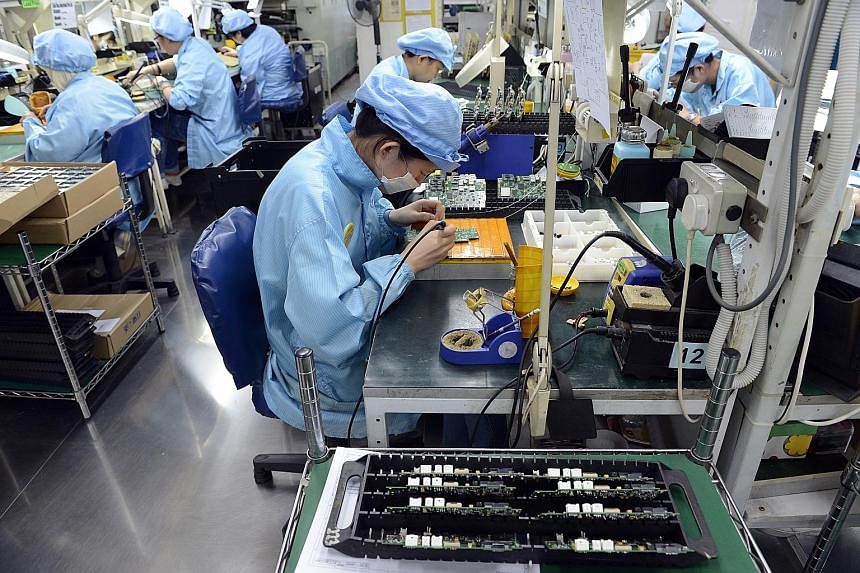Manufacturers hit by flagging demand and mounting costs may finally be seeing light at the end of the tunnel, according to the latest factory data.
However, economists cautioned against over-optimism, given that the outlook remains wobbly both in the region and globally.
The Purchasing Managers' Index (PMI) - an early indicator of factory activity - rose for the second straight month in June, after sliding for five months.
The latest reading of 50.4 follows a score of 50.2 in May. A reading above 50 indicates growth.
Manufacturing, which makes up a fifth of Singapore's economy, has been hit hard by ongoing restructuring, rising business costs and the Singapore dollar's strength, which has made exports pricier.
The sector shrank 5.7 per cent over April and May. This was a much weaker showing than the first quarter's 2.5 per cent decline.
The expansion in the PMI last month was attributed to increases in domestic orders, production output and inventory.
The data was compiled by the Singapore Institute of Purchasing and Materials Management from a survey of more than 150 firms.
The PMI for the electronics cluster, which makes up a third of the manufacturing sector, rose to 50.3 last month after May's 49.8 reading. The readings indicated a decline in new export orders, though domestic orders and production output went up.
While inventory and stockholdings of finished goods continued to shrink, imports expanded for the second consecutive month.
OCBC economist Selena Ling said it remains to be seen if the improvement in the electronics PMI can be sustained, as it has been "flip-flopping between expansion and contraction" this year.
UOB economist Francis Tan said the latest data contained encouraging signs, but warned against being too optimistic.
"I would be hesitant to point to this as a recovery... The first two months of the second quarter did not paint a good picture of the manufacturing sector and external demand still appears weak," he said.
However, the numbers still point to a better showing in manufacturing for the second half of this year, owing in part to a low base last year, Mr Tan added.
Manufacturers elsewhere in the region have also been hit by tepid global demand.
The struggles of South Korea's manufacturing sector deepened last month, with the headline PMI falling to 46.1, its lowest level since September 2012. This reflected both weak external demand and a deterioration in domestic conditions following the outbreak of Middle East respiratory syndrome, said Ms Krystal Tan, Asia economist at Capital Economics.
Taiwan's PMI fell to a 33-month low of 46.3, while China's official manufacturing PMI stood at 50.2, unchanged from the previous month.
Indonesia's PMI improved, but remained in deep contractionary territory at 47.8.
"With the global recovery likely to remain uneven, a strong recovery in Asian exports is still some way away," said Ms Tan. The risk of a "Grexit", or Greek exit from the euro zone, also continued to hang over Asia's export outlook.

